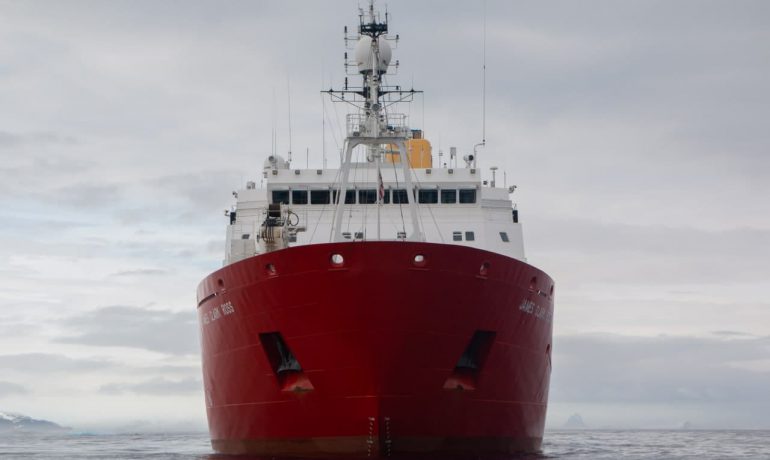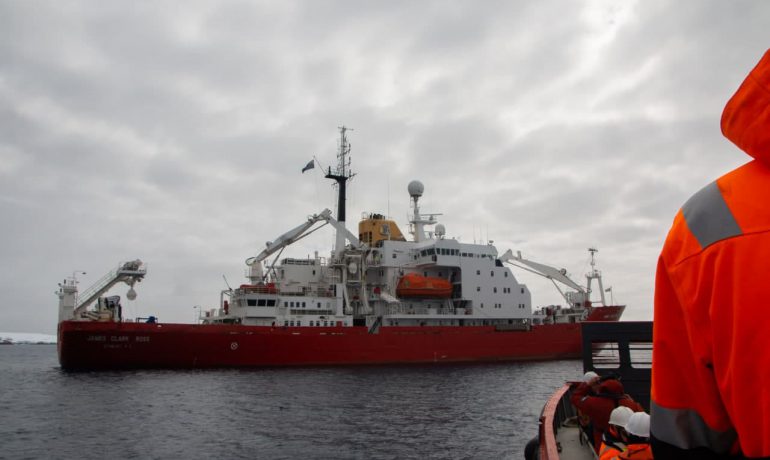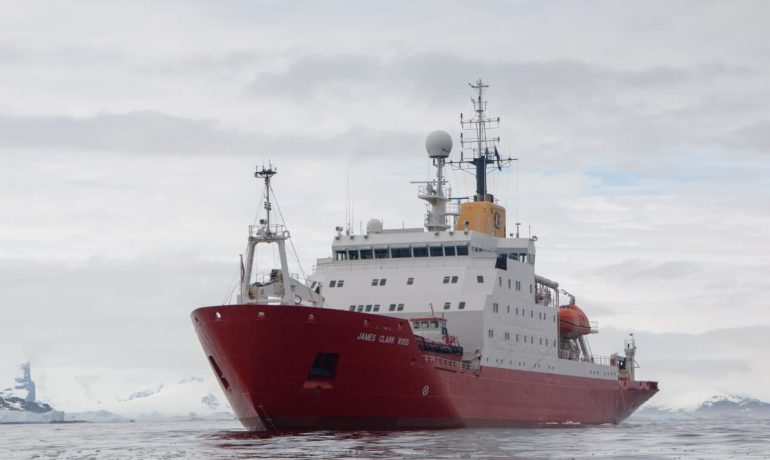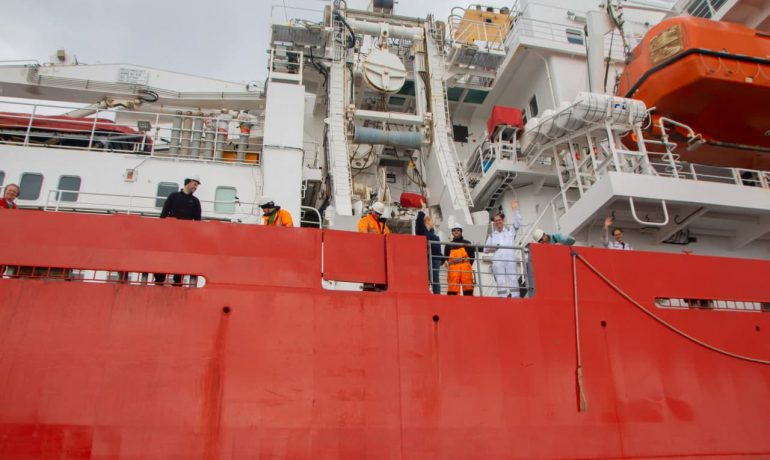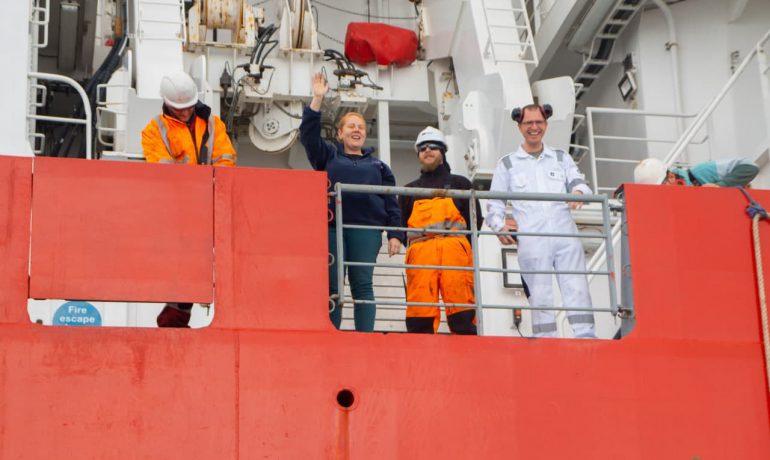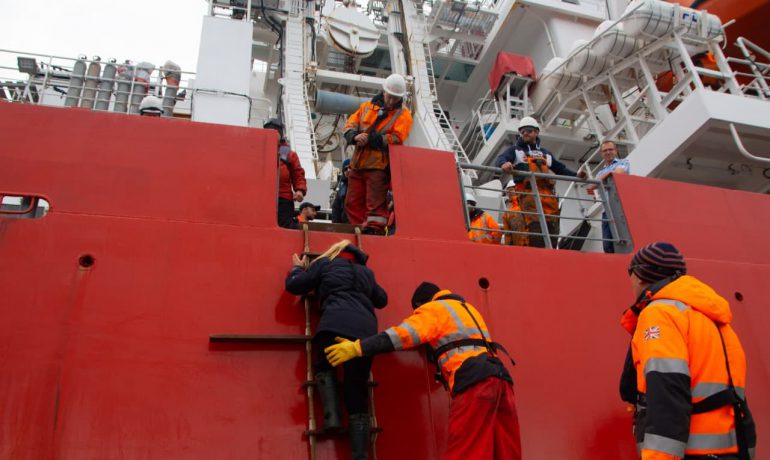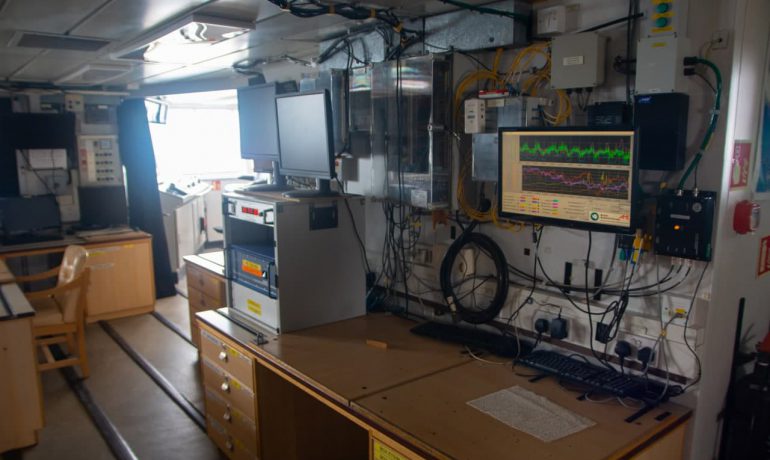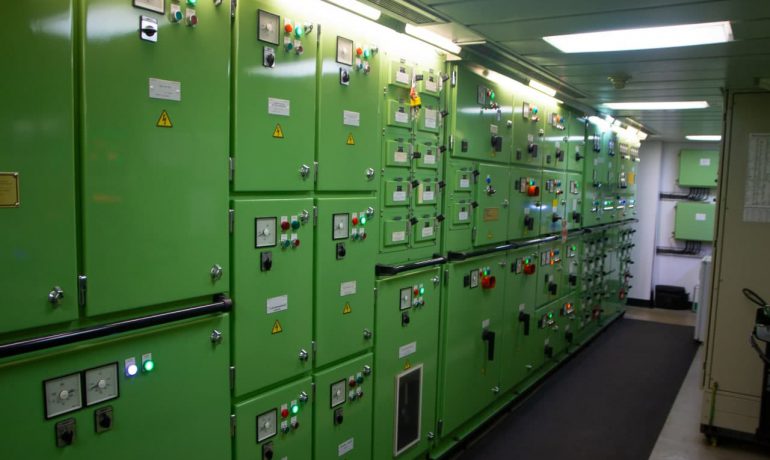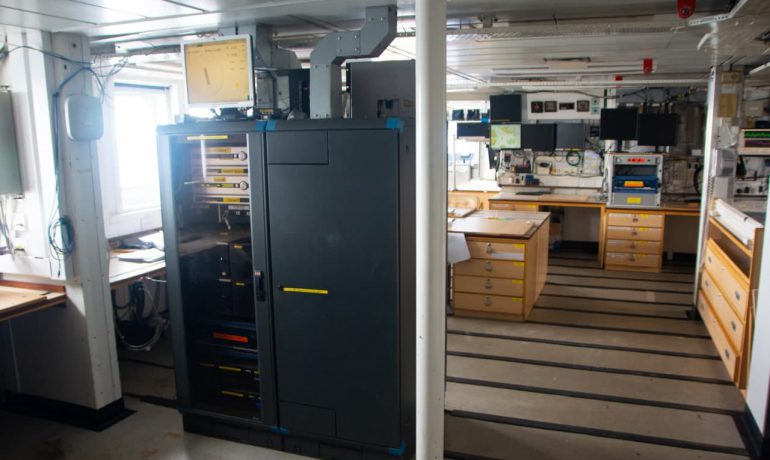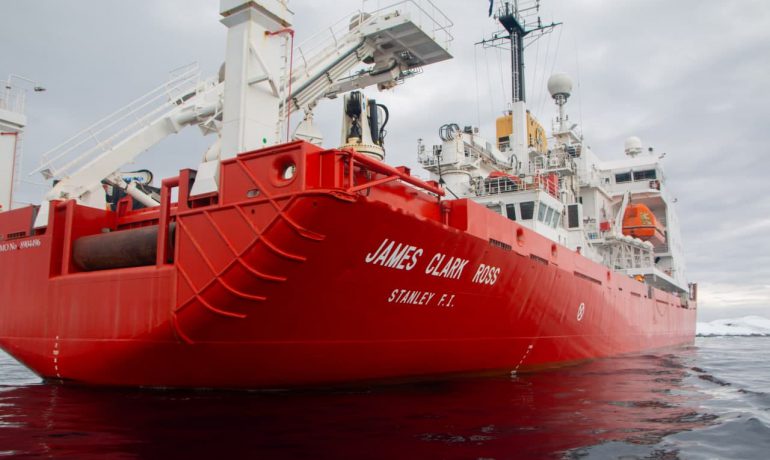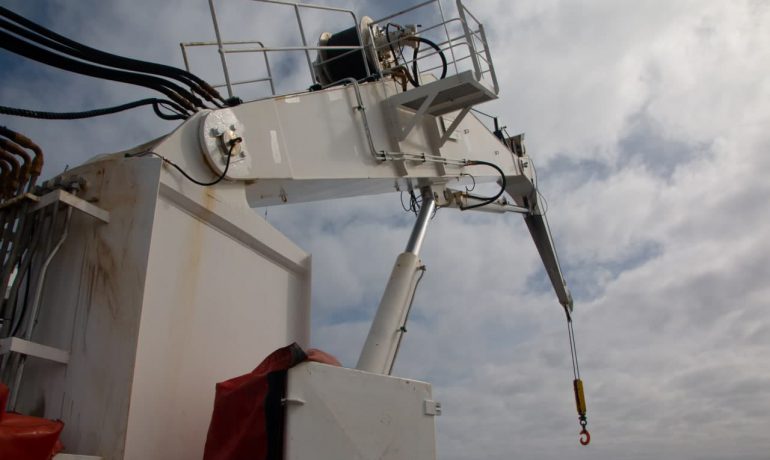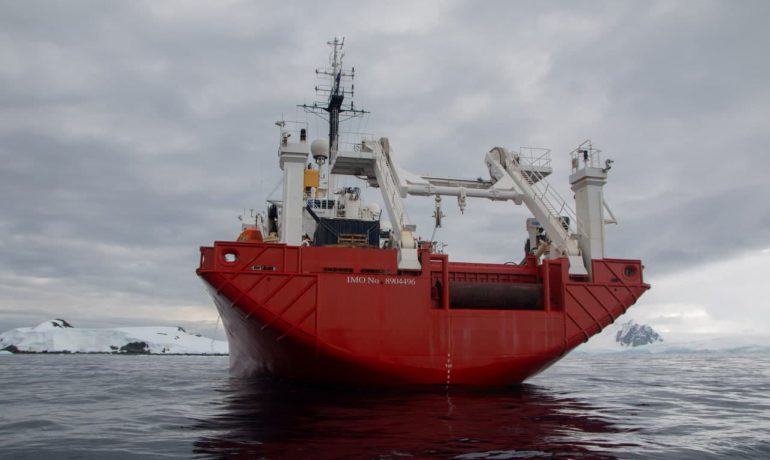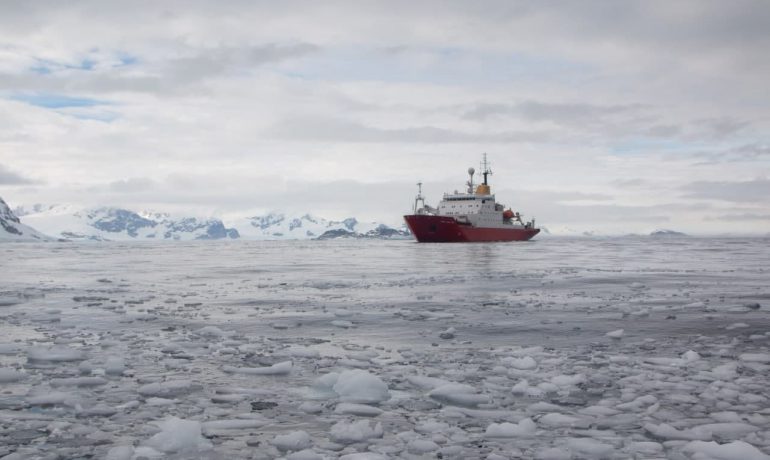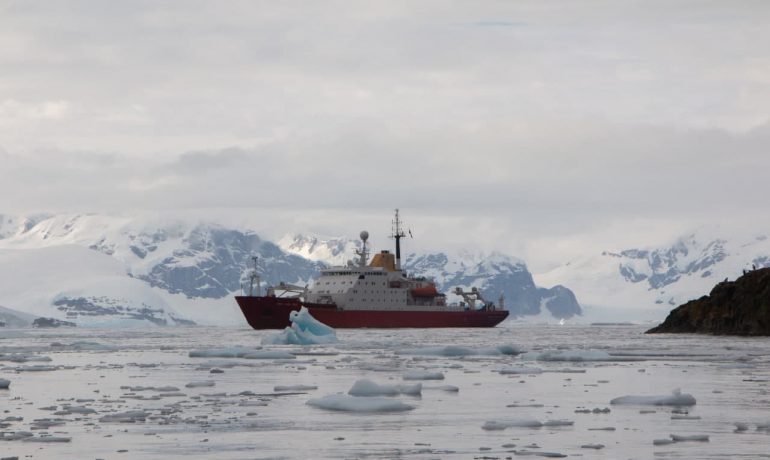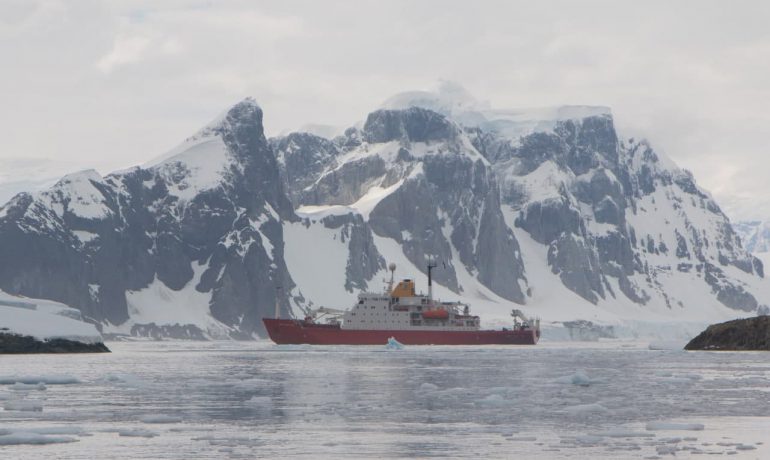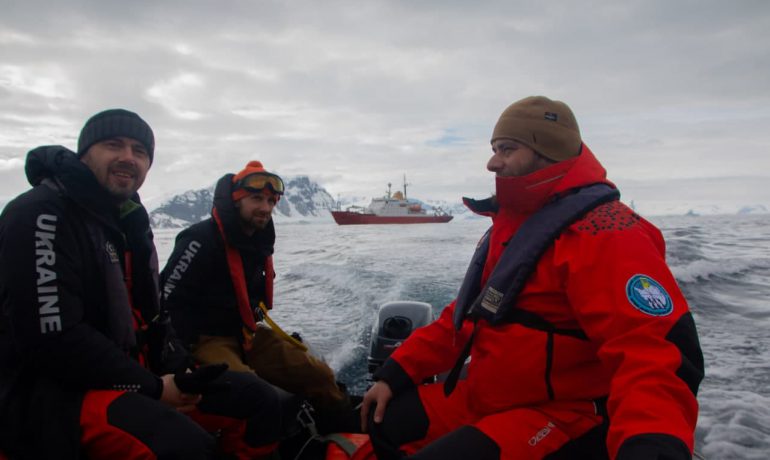Today, 19 August 2021, the National Antarctic Scientific Centre and institution “Research and Innovation” Great Britain (the British Antarctic Survey is a part of it), signed the Protocol of Delivery and Acceptance for purchase of the vessel “James Clark Ross” by Ukraine. After obtaining all needed documents, the vessel under the Ukrainian flag will travel from Denmark (where it is located now) to Ukraine. It is planned that the icebreaker will reach Odesa at the beginning of the autumn of this year.
“For Ukraine, the purchase of the RRS James Clark Ross opens a world of opportunities. For the last 20 years, Ukraine hasn’t had a vessel for Antarctic research, significantly impeding our work there. With this vessel, Ukraine has ambition on large-scale research in the Southern Ocean and possibly starting surveys in the Arctic in time. For us, the icebreaker “James Clark Ross” has a symbolic value as well, as it brought the first Ukrainian mission to the former British station “Faraday” (at present “Vernadsky”)” in 1996” said Director of the National Antarctic Center of Ukraine Dr. Evgen Dykyi.
For the past three decades, the JCR has fulfilled her role as a world-leading research platform for biological, oceanographic and geophysical research.
“The RRS James Clark Ross is much admired by all who have sailed in her. She has enabled scientists from the UK and overseas to make discoveries that help make sense of our changing world. We will miss her greatly, but I am delighted that our research colleagues will use her to carry out important scientific investigations. We wish them well.” said Director of British Antarctic Survey Professor Dame Jane Francis FRS.
Built by Swan Hunter Shipbuilders in Wallsend, UK, and launched by HM the Queen in 1990 the RRS James Clark Ross was part of the first international, multi-vessel survey to estimate the biomass of krill in the Atlantic sector of the Southern Ocean – a figure still used today in krill management models.
The ship is also a platform for deploying ambitious sediment coring technologies in previously unstudied locations, pushing coring technologies to its limits. Ground-breaking work in the Arctic provided insights into the scale and impacts of climate change in one of the most rapidly changing environments on the planet.
The ice-capable ship is a new asset for Ukraine and opens up new research opportunities for its National Antarctic Scientific Centre, in particular research into oceans and climate change in the polar regions. The purchase of the ship comes ahead of the COP26 Conference in November, where representatives from every signatory party for the United Nations Framework Convention on Climate Change (UNFCCC) come together to discuss climate change action.
This is the second time that a UK research asset has transferred to Ukrainian research colleagues – the first being the transfer in 1996 of the former Faraday station that is now known as Vernadsky. Now, the 26th Ukrainian Antarctic Expedition works there. During the celebration of the 25th Anniversary of the Ukrainian station “Vernadsky” President Volodymyr Zelenskiy has entrusted to restore the Ukrainian scientific research fleet in Antarctica, and finally, this historic event for Ukrainian science took place.
Photo by Evgen Prokopchuk, 25 UAE


